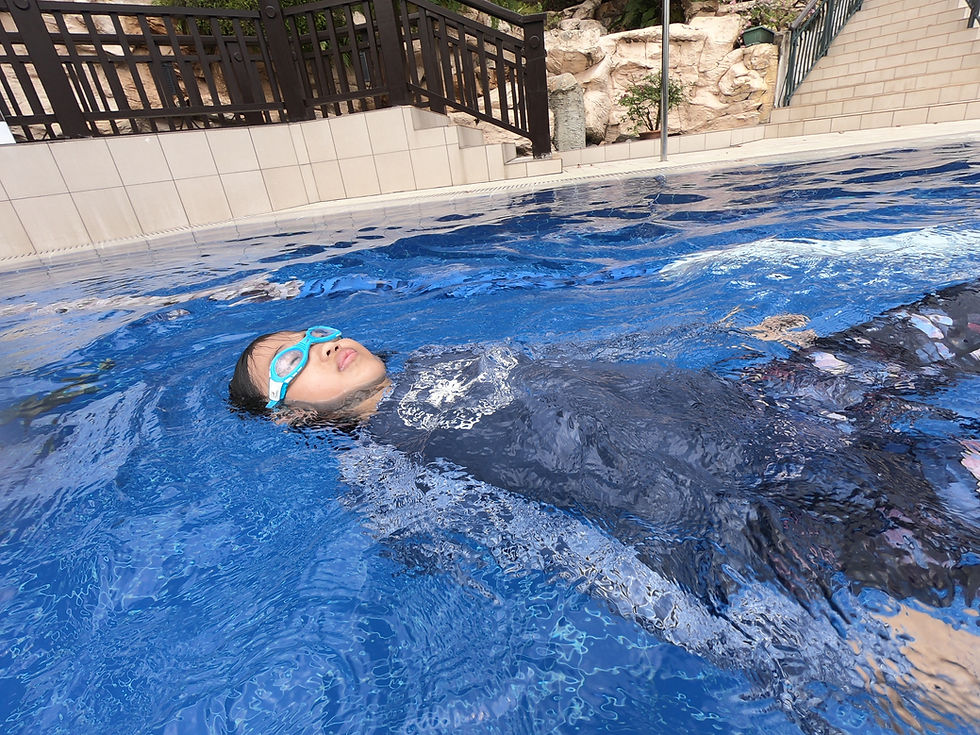The Role of Technique in Breaststroke Speed and Endurance
- SG Sink Or Swim

- 14 hours ago
- 4 min read

Mastering the Stroke Where Precision Beats Power
Breaststroke is often misunderstood. Many swimmers believe that stronger legs or a harder pull will make them faster. But in reality, breaststroke is the stroke where technique trumps brute force. A perfectly timed, streamlined, and efficient breaststroke can outpace a powerful but sloppy one — every time.
Unlike freestyle or butterfly, breaststroke is governed by a strict rhythm: pull, breathe, kick, glide. Break that sequence, and you lose momentum. Create drag, and you pay for it in speed and stamina. The secret to both speed and endurance in breaststroke isn’t how hard you work — it’s how smartly you move through the water.
In this guide, we’ll break down how refined technique directly boosts both speed and endurance — and the specific technical adjustments that deliver real results.
🐸 Why Technique Is Everything in Breaststroke
Breaststroke is the only stroke with a glide phase — a moment of stillness where momentum carries you forward. But this glide only works if your body is streamlined and drag-free. Poor technique turns this glide into dead weight.
Consider this:
A 0.5-second delay in kicking after the pull kills forward motion
Lifting your head too high drops your hips, doubling drag
A wide “frog kick” creates turbulence and wastes energy
Rushing the stroke eliminates glide, forcing you to work harder
“Great breaststrokers don’t pull harder — they glide smarter.”— Coach Dave Salo
⚡ How Technique Drives Speed
1. Timing = Propulsion
The magic happens in the sequence:
Pull and breathe together (as hands press back)
Kick immediately after hands snap together
Glide with purpose — don’t rush the next stroke
🎯 Cue: “Pull to breathe. Kick to shoot. Glide to go.”
A well-timed kick uses the momentum from the pull to launch the body forward — like a slingshot.
2. Streamline = Free Speed
Head position: Eyes forward (2–3m ahead), chin slightly tucked
Body line: Hips high, core braced, toes pointed
Glide phase: 0.5–1.0 seconds (longer in 200m, shorter in 50m)
💡 Elite Insight: Adam Peaty glides 3–4 meters off every wall — that’s free speed no one else gets.
3. Compact Kick = Explosive Power
Heels to butt — not knees out
Toes pointed outward, then snap together powerfully
Kick backward, not down
🚫 Illegal & Inefficient: Knees wider than hips or breaking the surface
🎯 Cue: “Kick like you’re snapping a towel — not opening a door.”
🕒 How Technique Builds Endurance
1. Reduced Drag = Less Energy Cost
Every bit of drag forces your muscles to work harder. By minimizing resistance:
You lower heart rate at the same pace
You delay lactate buildup
You conserve energy for the final 50
📊 Fact: A streamlined breaststroker uses 20–30% less energy than a sloppy one at the same speed.
2. Efficient Breathing = Calm Nervous System
Breathe forward, not up → keeps hips high
Inhale quickly, then exhale steadily underwater
Avoid breath-holding → prevents CO₂ buildup and panic
🎯 Cue: “Breathe through the keyhole — small, fast, forward.”
3. Optimal Glide = Strategic Rest
Don’t over-glide (momentum dies)
Don’t under-glide (no recovery)
Find your sweet spot by race distance:
🛠️ 5 Technical Drills That Build Speed + Endurance
1. 3-2-1 Timing Drill
“3” = Pull/breathe
“2” = Kick
“1” = Glide
Builds rhythm and eliminates rushing
2. Fists-Only Breaststroke
Swim with closed fists
Forces high-elbow scull and eliminates over-pulling
3. Vertical Breast Kick
In deep water, cross arms, kick to keep chin above water
Builds explosive, compact kick with no wall push-off
4. Tempo Ladder
4 x 50m: 2.2s → 2.0s → 1.8s → 2.0s stroke cycle
Teaches pacing control for 100m/200m
5. Pullout + 3 Stroke Sprints
Max effort off wall → 3 powerful strokes
Builds race-winning wall speed
📈 How to Measure Technical Progress
⚠️ Common Technical Mistakes (And How to Fix Them)
Final Thoughts
Faster, stronger breaststroke doesn’t come from harder work — it comes from smarter movement. It’s the inch you narrow your kick. The degree you lower your head. The second you allow yourself to glide.
When you master the technique, you don’t just swim faster —you swim farther, smoother, and with less effort.
So next time you push off the wall, don’t just pull and kick.Time it. Streamline it. Glide through it.
Pull compact. Kick tight. Breathe low. Glide smart.
Because in breaststroke, speed and endurance aren’t earned by power —they’re unlocked by precision. 🐸⏱️💙





Comments